Why You Need To Try The Pathfinder Adventure Card Game!
July 2, 2014 by crew
After living on Coruscant (The City) for a little over ten cycles, moving away from my regular gaming group and going back to Tatooine (The Deepest, Darkest, Countryside) was tough. For one, there was a distinct lack of basic services that I had grown accustomed to. Things like the internet, or a telephone line. Transports off that particular rock were few and far between and while the terrain was nice enough in a bleak and lonely sort of way, the Jundland Wastes were not to be travelled lightly. As somebody once said: "If there's a bright centre to the universe, you're on the planet that it's farthest from."
One thing consoles me as I huddle up behind some adobe walls and wait for the Tusken Raiders to come for me, and it isn’t a force FX lightsaber. It is a very cool card game in a very large box.
But enough with the Star Wars references! It is time to tell you about the Pathfinder Adventure Card Game from Paizo, a fully cooperative experience for one to four players that blurs the lines between a deck building game and a tabletop role-playing game. That's right! If, like me, you only have a herd of Bantha to keep you company, this game could be for you!
If you have somebody else to play it with, it’s probably even better!
A Brief History Lesson
Paizo is the company behind Pathfinder, a role-playing game which is built upon the d20 system made popular by Dungeons & Dragons 3rd Edition from Wizards of the Coast.
While Wizards of the Coast launched D&D 4th Edition in 2008 to replace the venerable third edition of the rules, Paizo have demonstrated that the d20 system still has some life left in it and after publishing the Pathfinder role-playing game in 2009 they have continued to tweak the rules whilst expanding their own campaign setting. Along with the various supplements that describe their world of Golarion and it’s inhabitants, Paizo also produce a series of Pathfinder adventure paths; campaigns that are comprised of six interlinked adventures that take a group of lowly first level characters to the lofty heights of fifteenth level and beyond.
The Pathfinder Adventure Card Game from Lone Shark Games - and published by Paizo - is a retelling of those adventure paths in the form of a deck building game, with the narrative similarly distributed across six releases. The first set - recently concluded - is the Rise of the Runelords adventure path, with the second set - Skull and Shackles - due for release in the third quarter of 2014.
Rise Of The Runelords!
Released last August, The Pathfinder Adventure Card Game : Rise of the Runelords base set comprises of approximately 500 cards and contains everything one to four people need in order to start playing. This includes the rulebook, dice, seven characters, a three scenario mini adventure which serves as a challenging 'prologue' as well as one adventure deck - the first adventure in the adventure path.
The other five adventure decks have been released individually, each consisting of another 110 cards that are added to the base set once the previous adventure in the path has been completed. Each deck adds new challenges and scenarios that increase in difficulty as you progress through the decks.. but of course, the rewards get better too!
There is also an optional Character Add-On Deck. Not only does this give you four more characters to chose from but it also provides enough additional cards to allow five or six people to play through the Rise of the Runelords campaign.
So How Does The Game Work?
Each adventure path consists of six interlinked adventures and each is further broken up into six scenarios and a scenario is what you will be attempting to complete in a each game session. Although the scenarios and the adventures they belong to will often have special rules to reflect the sequence of events that are unfolding in the story, the mechanics of each scenario are largely the same.
A scenario will take place over three or more locations - each represented by a deck of ten cards which must be explored by a character at that location and the more players there are playing the game, the more locations there are to search through. A location deck might conceal some useful items or a magical weapon, a potential ally or a blessing from the gods (collectively, these ‘helpful’ cards are called boons) but it is just as likely to contain a trap or a handful of monsters waiting to surprise the curious adventurer (collectively known as banes). One thing you can guarantee about a location is that it will also be concealing either the villain or one of his trusty henchmen. All the players have to do in order to complete the scenario is find the chief antagonist, cut off his escape routes to the other location decks and throw down some dice to defeat him before the time runs out!
Each session is fast paced and some of the scenario rules are really fun - Here Comes the Flood being my favourite so far. I don’t want to spoil anything but you’ll be wishing you could trade in your weapons for a few buckets! The card handling will also feel familiar to anyone who has played games such as Magic: The Gathering but it also has a few novel twists such as:
Taking Damage: Incoming damage is applied to your hand of cards, forcing you to discard them when you fail to beat a monster or bypass a trap. Healing allows you to recycle cards from your discard pile back to your draw pile and your character is only defeated when you have to draw a card but you can not do so because your draw pile is empty.
The Blessing Deck: Not only does this serve as a turn counter, whereby a blessing is drawn and placed face-up on the blessing discard pile, it also represents the passage of time, the position of the stars, the influence of the gods or perhaps just plain luck. Some monsters get tougher depending on which blessing is currently on the top of the blessing discard pile, while players will find that the blessing cards in their hand can become more effective if they match with that card on top of the blessing discard pile. Oh, and if the blessing deck runs out, the villain has succeeded in his goal and the players fail the scenario!
Many banes have more than one way to overcome them. You don’t always have to make a combat check to defeat a monster or henchman. Many of these cards can also be defeated - or at least bypassed - with skill checks such as arcane, divine or survival. In some cases, it is actually easier to defeat certain monsters with a little applied knowledge than it is to chop it up with your sword!
About Those RPG And Deck Building Elements...
The characters included in the base set (and indeed, the Character Add-On deck) are drawn from the ranks of iconic heroes used in the Pathfinder role-playing game material, each with a set of stats and skills that look suspiciously like an abridged Dungeons & Dragons character sheet. Coupled with a small number of unique abilities that help to further differentiate the characters from one another, you will start off with a hero that fits one of the classic fantasy archetypes but quickly becomes your own as he or she levels up.
When you play this game, your characters are persistent! Each time you complete a scenario or an adventure, your character receives a reward. Sometimes it will be in the form of a new card that can be added to that character’s deck (more on that in a moment) but other times it will be a ‘feat’ which you can use to upgrade your character. Perhaps it will be a card feat which will allow you to increase the size of your deck or perhaps it will be a skill feat which grants an additional bonus to certain kinds of die rolls. On the other hand it might be a power feat that gives you the opportunity to improve the effectiveness or versatility of your special abilities. Once you reach the halfway point of the adventure path, you can even pick a role (similar to a D&D prestige class) which allows you to take your character down one of two paths, each granting access to an expanded set of powers.
The numbers on your character card are only half the story, however, because your character’s deck is persistent too! Most characters will start out with a deck of fifteen cards that can be built by the player from the selection available in the starter set, with the distribution of cards determined by the character’s card list. Ezren the wizard, for instance, must have eight spells in his fifteen card deck but his player does not get to put an armour card into that deck unless you choose to ‘purchase’ that option with a card feat later on. Valeros the fighter, on the other hand, must have three armour cards in his deck when you first start playing him but you will never get to include any spells in his deck.
During play, you will encounter various boons as you explore the scenario’s locations and as long as you successfully acquire them, you can make use of anything you find so long as you have the right skill for it. This means that while you might only have a deck of fifteen cards, you might have twenty or more moving through your hand, draw pile and your discard pile at any one time. Upon the conclusion of the scenario - assuming your character survives of course - you must rebuild your deck and while you are required to adhere to the card list for your character, you can rebuild your deck from everything you have on the table in front of you plus any cards you might have received as a reward for completing that scenario. If your card list entitles you to have a single weapon card in your deck and you’ve been carrying around a fairly unimpressive short sword for the last few games, you can take that +1 Flaming Longsword that turned up during the game - even if it is in your discard pile even if it is in another player’s discard pile and add it to your deck as long as everybody can agree on who gets to have what!
To stop a deck from becoming stagnant - or perhaps to stop some lucky players sitting on a hoard of powerful cards - there are going to be occasions where you are forced to banish a card from your hand. Maybe to stop the villain’s unnecessarily slow dipping mechanism, one of you has to jam a weapon in it’s gears or perhaps one of your henchman must make the ultimate sacrifice in order for the rest of the party to run away from the dragon.. but when it’s time to banish a card, it is put back into the game box where it is unlikely that you will ever encounter it again. You must mourn the loss of Anna the Awesome Acolyte Ally and move on!
Your character becomes more capable with each completed adventure and your deck - representing both your options, as well as you life - slowly grows until you can go toe-to-toe with giants, dragons and demons in the quest to defeat the Runelords.
...but watch out for those Sirens, man. Freaking Sirens.
Interested?
Now that the Rise of the Runelords adventure path is complete for the Pathfinder Adventure Card Game, you can pick up all seven releases from your FLGS right now and play through the entire campaign at your leisure. If one complete play through is thirty six scenarios (plus three more from the optional mini-adventure) there is a fair amount of replayability when you consider the number of characters at your disposal. You can even download character sheets from the Paizo website if you want to run several campaigns simultaneously with different groups of friends. Because the game has been out for almost a year now, you should be able to find the base set for a reasonable price if you want to give it a try without committing to the full campaign.
The base set for the next adventure path - Skull and Shackles - is scheduled for release in August and I expect that a limited number of copies will be at GenCon from the Paizo stand if you are lucky enough to be going.
At the very least I expect there will be plenty of Skull and Shackle demo games and I can’t wait to see how Paizo have tailored the base mechanics to make it feel more piratey! If you want to jump in with something new, this might be the place to start and from September, Paizo will be moving to a more aggressive release schedule with the adventures to be released on a monthly basis instead of bi-monthly, allowing for two base sets to be released each year.
I can’t wait until they do Kingmaker!
If you would like to write an article for Beasts of War then please get in contact at [email protected] for more information!
"...but watch out for those Sirens, man. Freaking Sirens."
Supported by (Turn Off)
Supported by (Turn Off)
Supported by (Turn Off)





























![Very Cool! Make Your Own Star Wars: Legion Imperial Agent & Officer | Review [7 Days Early Access]](https://images.beastsofwar.com/2025/12/Star-Wars-Imperial-Agent-_-Officer-coverimage-V3-225-127.jpg)



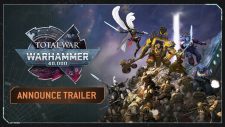

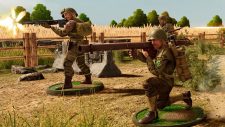





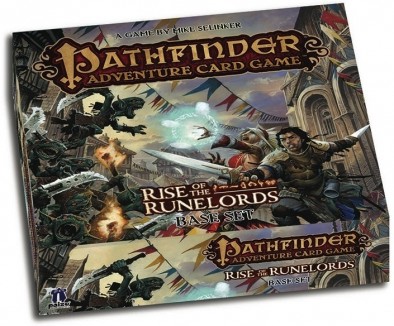
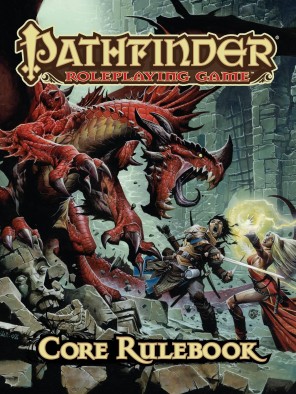
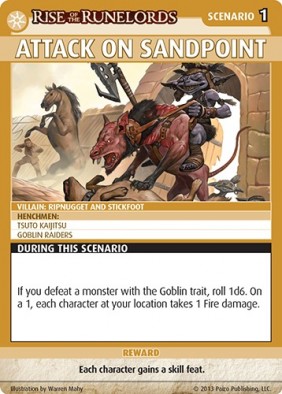

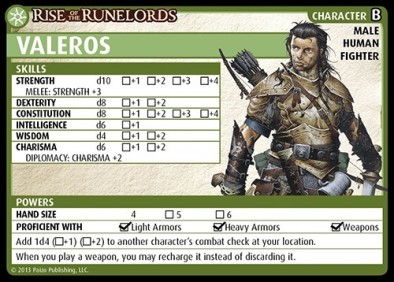
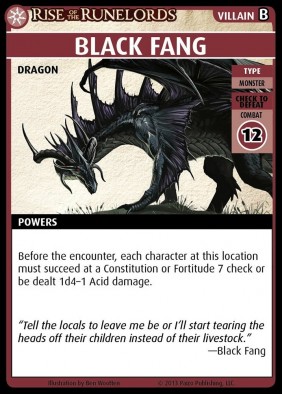
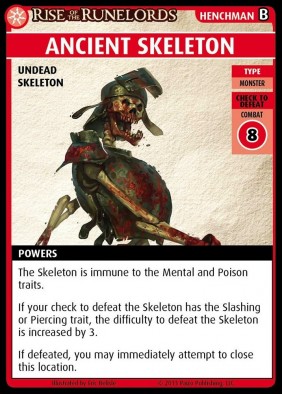
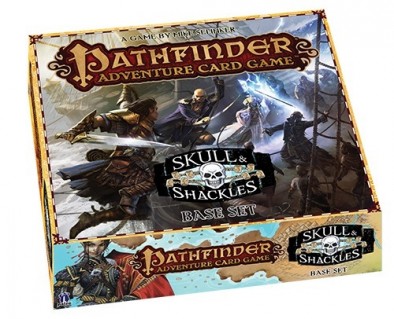



























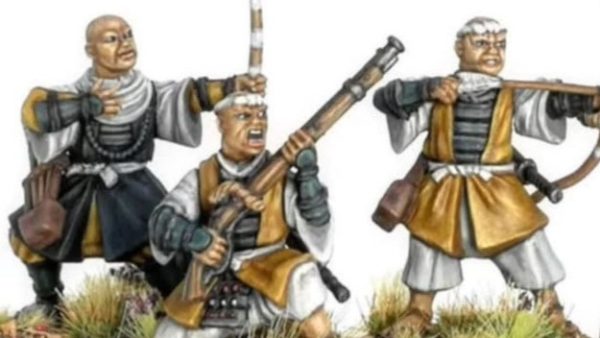
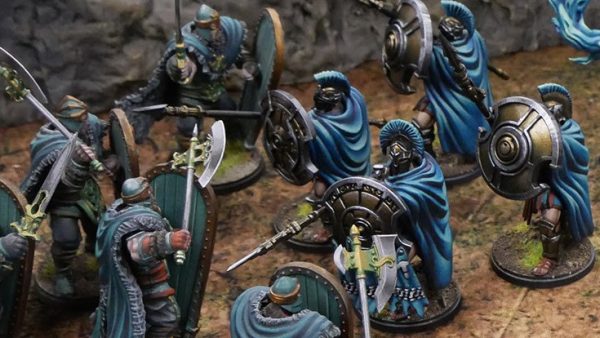
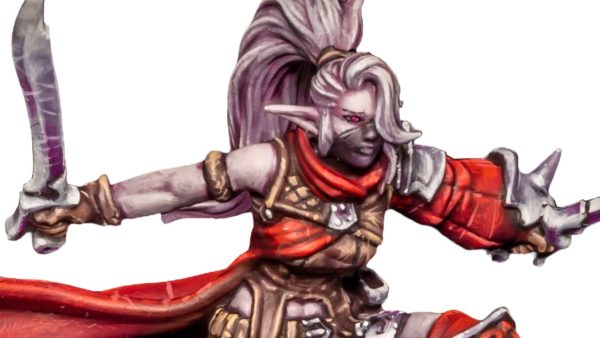
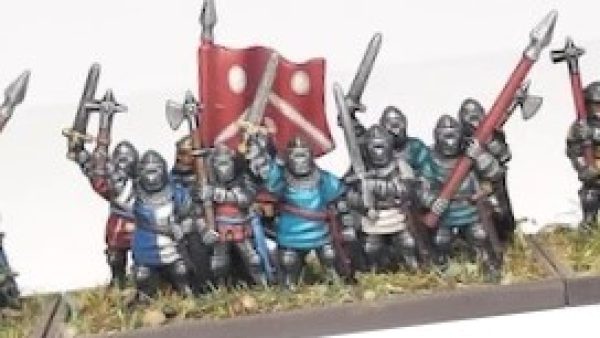



Oh yes, this game is quite cool…
I’ve played this. Partway through a campaign, in fact.
Since I wrote this, I came across two videos from Origins where Mike Selinker (of Lone Shark Games) talks about the Pathfinder Adventure Card Game. Note that when Mike talks about there being one scenario per adventure that is “pretty weird” he means that, of the six scenarios that are in each adventure, one might deviate from the mechanics used by the other five.. such as the “Here Comes the Flood” scenario I mentioned. Since these are even more fun than the regular scenarios, this is a good thing 😀
https://www.youtube.com/watch?v=jJuvHvWbbao
.. and he also gives a preview of Skull and Shackles base set. It has pirate ships!
https://www.youtube.com/watch?v=Fk3e2-1t0UE
Brilliant game. Made an appearance a few weeks back on Sunday games night. Hoping it appears again this week.
I was playing as the Druid, lots of fun 🙂
God this game is sooooo freaking boring.
Flip a card – roll a dice – flip a card – roll a dice – flip a card – roll a dice…
Have to admit to only having played it solo though as nobody else will play it.
Heh I have no doubt that we were playing the same game.. and most of my experience with PACG has been solo since moving. I suppose the fun comes from the challenge of finding ways to overcome the encounters, particularly ones your character is not very good at. If you aren’t invested in keeping your character alive or perhaps on the flip side, you get lucky with your rolls all the time, I could see how it might not be as enjoyable 🙂
When playing solo, you have to play with at least four characters or it’s just too easy. You can pretty much play on autopilot. But the game difficulty ramps up as you add players (and subsequently, locations), and it becomes more tactical and challenging.
Having said that though, I’m not sure the amount of fun I’ve had with this game justifies the cost. It is a high-cost game, especially if you go for the expansions.
I kind of prefer the system in LoTR from Fantasy Flight, but I feel like it wastes the theme by letting you create totally weird decks like hobbits with eagles for some reason or characters from decades apart fighting together in the same deck, and that kind of thing. The gameplay is fun, but would be much more so if the theme were a better match for the system.
I think PFACG is an interesting idea, and there’s definitely potential there, but the cards in first edition just didn’t sell the game as well as they could. Hopefully they did a better job in the second edition, but I’m not shelling out the cash for it until I can see for sure. In the meantime, I’m waiting to see if Catalyst’s Crossfire does a better job at scratching this particular kind of itch.
I also tried the LotR game before this because lets face it, there aren’t too many board games and card games out there that are suitable for solo play. I had a similar disconnect with the deck building, but I also found it quite tiresome having to build a deck for each scenario. The base set was pretty challenging but a good purchase.. but once I started getting a few of the expansion decks I realised it wasn’t for me. In terms of value I would agree that LotR comes out slightly ahead – mostly because there is no campaign system that encourages you to buy five specific expansions so you have the freedom to buy as much or as little as you like.. although there is still a dependency between the expansion packs and the adventure packs.
As for the difficulty in solo I would say that depends on which character you play. If you pick an ‘optimum’ character so that you can ‘win’ such as Amiri then yeah it’s fairly easy. But where PACG borrows from a role-playing game is that you can pick the character you want to play and find a way to make it work.
I assure you, getting through Rise of the Runelords as Lem was *not* a cakewalk but it was still more enjoyable – and more plausible – than playing with a deck that is built around the wrong sphere. But I don’t see that as a weakness of either system, just a consequence of how much deck building there is in each game. With PACG your deck slowly improves but you don’t get to rebuild it to beat a particular scenario and I kinda like that.
Truth be told, if I had the money and the space, I would still have both 🙂
That’s not as true as it used to be, and just this year we’ve got two new entries into the solo–6 player adventure card game format (PFACG and Crossfire, which was technically out at Origins). I think you’re going to see some real competition in this space and that means designers will be tinkering with systems, trying new concepts and hopefully really improving these games overall. I’m glad PFACG exists to serve as a part of that cycle, but I’ll wait until the rules have been iterated over a few more times before I buy in again.
I can’t fault that approch 😉
..and I, too, am really looking forward to Crossfire which is odd because a year ago, Shadowrun was not on my radar at all. In fact, since I had spent years playing “proper” Cyberpunk I purposefully avoided it. Shadowrun Returns really showed be how wrong I was and I am very eager to try out anything Shadowrun related.
If you like RPGs, try Shadowrun 5th edition. It’s really good. The systems sound complicated until you sit at the table and start playing, then it all just flows. It’s an exceptionally good game.
I’ll have to try and give it another go at some point. But the moment I realised it was flip – roll I just couldn’t get that out of my head and lost all interest. 🙁
A friend of mine picked up this game when it first released, and three of us played it. We weren’t all that impressed, and he ended up just running a Rise of the Runelords campaign for Pathfinder proper.
Yeah I think.. unless your friends specifically want the novelty of playing a Pathfinder card game, it’s hard to recommend over the chance to *actually* play the RPG 😀
I like it myself and I am playing solo, ok with a bottle of Jack Daniels. Perhaps this is the key to bringing some life to it? As a long time RPG’er I can appreciate the fact that this is not an RPG in a box. It’s a card game with the tactical combat feel of a fantasy RPG, specifically the Pathfinder environment but I find myself enjoying it and getting lost in my (Jack Daniels assisted) imaginings.
The card artwork is pretty good, characters are slightly juvenile for me but then I’m an old git, overall quality is high, barbarian’s sword is bloody stupid though. Game system runs pretty smoothly but I found I really appreciated Ricky Royal’s Youtube run though to get going since the rulebook jumps around a bit in my opinion.
For me as a game I played 3 times in the weekend since receiving it, it’s a success. I’m still playing and have the character expansion and next adventure. I don’t intend to play it with the group since I don’t think it’s their sort of thing – a bit “statisticy”. But speaking as quite a nerd, I’m having a good time with it and looking forward to running some different combinations of characters.
If you like it you’ll want to add a few extra sets of poly dice. The single set in the basic game is just inadequate.
I am surprised this game struck a raw nerve with so many people. My only complaint has to do with the long setup time. I find it to be a very fun cooperative group game that also just happens to function solo. It is one of my favorite card games.
If you are in the US and you are not going to GenCon, the Amazon pre-order for Skull and Shackles is *super* cheap right now.. plus it has free shipping.
Cant wait to get my hands on it.
Still waiting for the German version.
Which should have been released in February 2014 than April than Mai than June and now August. 🙁